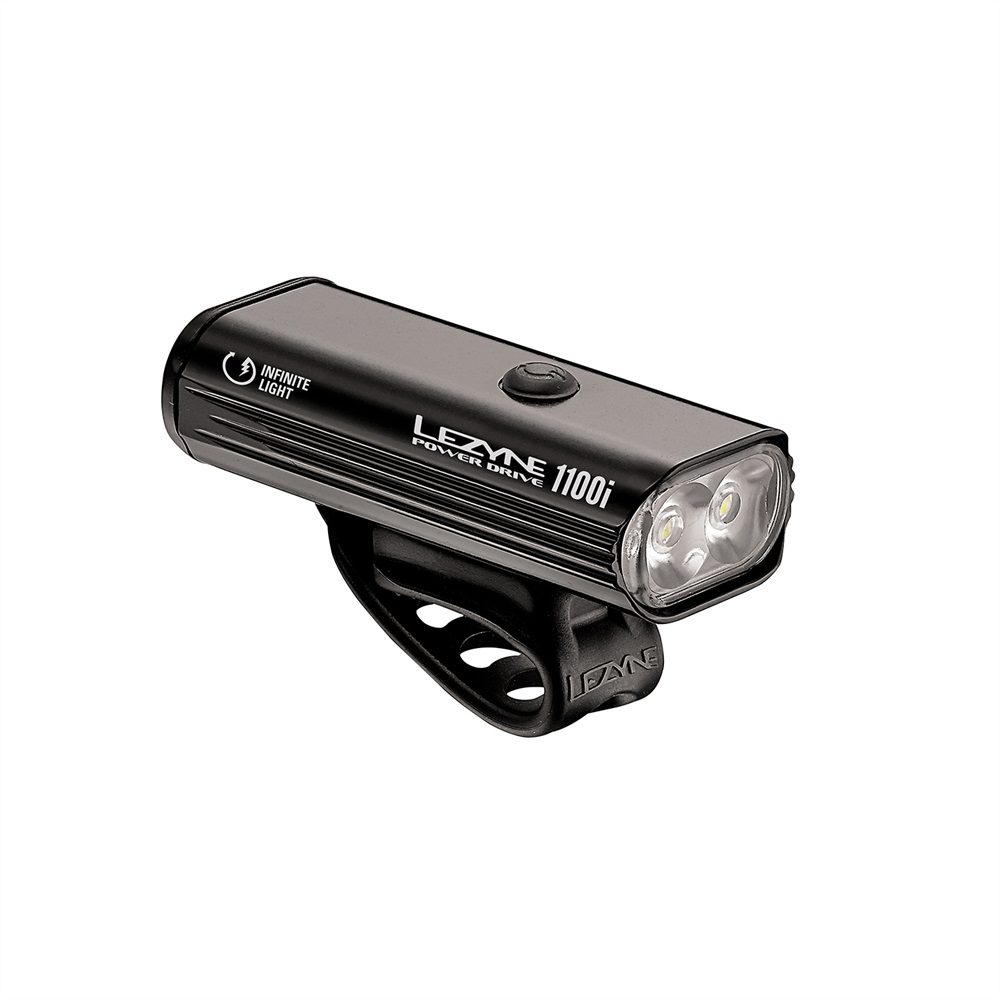Dazzling bike lights
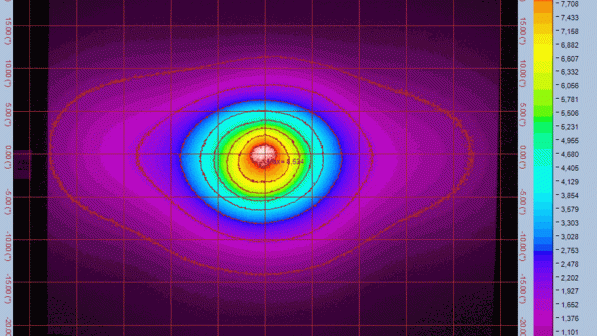
The headlamps on cars have also become brighter and augmented by rows of LED daytime running lights. It seems like we’re in a lighting arms race. But thanks to a lack of regulation on our side, it’s an arms race some cyclists are winning! And people are starting to notice.
That’s no bad thing you may think; we need to be noticed more, for safety’s sake. But not when one person’s safety is won at the cost of another’s distress and loss of safety, including other cyclists.
Here’s something that happened to me last winter, riding home through unlit country lanes, I was descending a long, straight and gentle hill when I met a car coming the other way on full beam headlights. They were so glaringly bright that although I have an excellent (no-dazzle Schmidt Edelux) headlamp myself, I couldn’t see a darned thing beyond those headlights. However I was aware of another car some distance behind me, so I thought this approaching driver would surely dip pretty soon for that, if not for a cyclist. He (or she) didn’t. But I know the road well, so I didn’t brake and aimed into the dark just a bit to the left of the offside light. Firstly I noticed this car was going rather slowly, and just had time to think it might be driven by some old geezer who can't find his dip-switch, when I passed and saw not a car, but two cyclists on road bikes steadily pedalling up the hill! I was too surprised and didn’t have time to say a thing. Which was just as well. It wouldn’t have been polite, and they probably don’t realise they were selfishly blinding every person they came across!
The Sunday Times takes an interest
As I get to review things, I’m well aware of how much brighter bike lights have been getting. So whilst it can be fun to make the night as bright as day, that isn’t necessary at sensible night-time cycling speeds and I find some of them downright embarrassing to use, impossible to use responsibly except by cupping one hand over the light at the approach of another road or trail user. And at CTC we are receiving increasing numbers of complaints from the general public and our own members, about the blinding lights used by some cyclists.
At the end of 2012, I was contacted by Alex Pell, a journalist and cyclist who’d got wind of the controversy that was beginning to surround the use of very bright bike lights. He wanted to find out whether cyclists are using these lights irresponsibly, or whether the lamps are simply too bright to be used any other way.
We chose around ten reasonably expensive bike lamps, to represent the market for very bright on-road lighting – as it was in the winter of 2012/13. These ranged from market-leading British-made lamps sold in all good bike shops, to low-cost direct imports available on the internet.
Glare is a subjective matter. It can be measured, but depends upon the brightness of the general scene and position within that scene of the source of glare, as well as its ‘luminance’. Luminance is the intensity of light emitted (in candela) in a particular direction, divided by the area it comes from.
According to the Road Vehicles Lighting Regulations, it is an offence for any light on any vehicle (that includes bicycles) to “cause undue dazzle or discomfort to other persons using the road”*. So the law is subjective too and to put some numbers on how bright a light can be before it’s likely to dazzle, we must refer to design standards.
Standards
Motor vehicles have to be ‘type approved’ for use on public roads, and as part of that approval their lighting must conform with ECE regulations. These ensure that dipped headlamps don’t dazzle other road users by putting a top limit on the intensity of light emitted in an offside above-horizontal direction. For technical reasons different types of lamp have different limits**, but the most another road user should see from any ECE approved headlamp, when dipped, is 625 candela.
When it comes to bike lamps, the British Standard is out of date to the point of irrelevance. Your chance of finding a genuinely BS6102/3 headlamp in a specialist bike shop is close to zero and most of those on the market are simply designed to deliver as much bang as possible for the cyclist’s buck. And that’s no bad thing - until you meet one coming the other way!
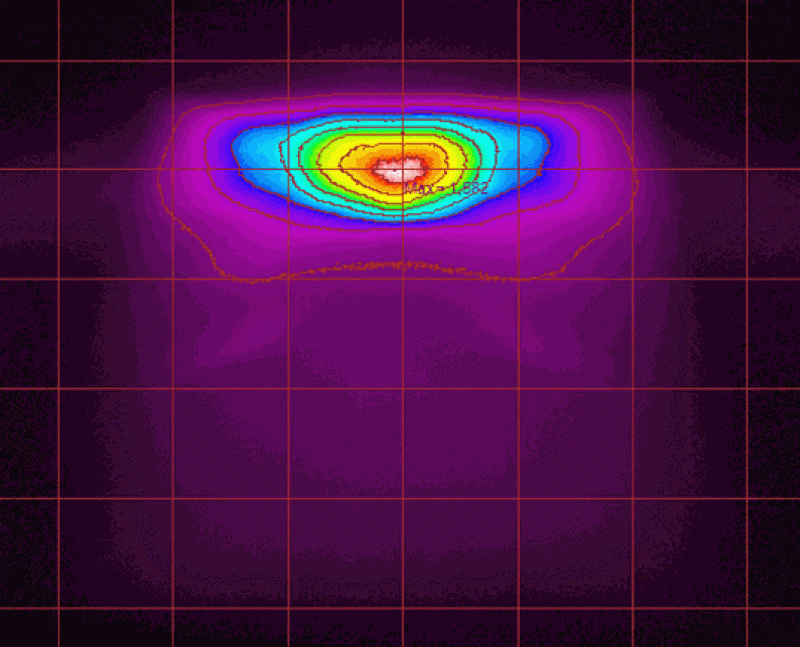
Size matters
I hear what you’re thinking: 200 is a lot less than the 625 allowed from a dipped car lamp and that’s not fair! Actually it's very fair, given how much smaller bike lamps are compared to car lamps, which makes them more dazzling for the same candela intensity.
A smaller lamp is more dazzling because each little bit of the lamp’s surface will then be sending more photons into the corresponding rod or cone of the observer’s eye. Once that receptor has been saturated with light, more does nothing useful, only hurts and bounces around inside the eye making everything else look fuzzy. So dazzling is also a complete waste of energy.
Now imagine the same amount of light coming from a larger emitting surface. The image of this larger lamp covers more of the observer’s retina, so each rod or cone is bombarded by fewer photons and does not saturate. And with more of the observer’s nerve cells responding more efficiently to the light you’re putting out, it has more effect. With a larger lamp you’re on a roll. You don’t just avoid dazzling people, but also get more conspicuity bang for your lighting buck!
Simply regulating light intensity isn’t a great way of limiting dazzle. But it’s better than nothing. And given that bike lamps are typically less than a quarter the size of motor vehicle lamps, a lower limit of 200cd is more than fair.
What's your aim?
Since bike lamps cannot (usually) be dipped, and are not fixed in the vehicle, the standards for bike lamps have to make assumptions about how the lamp is likely to be aimed. They generally assume the brightest spot in the beam will be aimed downwards at an angle of 3.5 degrees.
For a lamp on the handlebars, 1m above the road, 3.5° down means that brightest spot will hit the road 16m in front of the bike. And it means the rider won’t be able to see very much beyond that. So I think most cyclists will probably aim their lamps a little higher in order to see further ahead. If you agree, you have to agree that standards are more than fair on this point too.
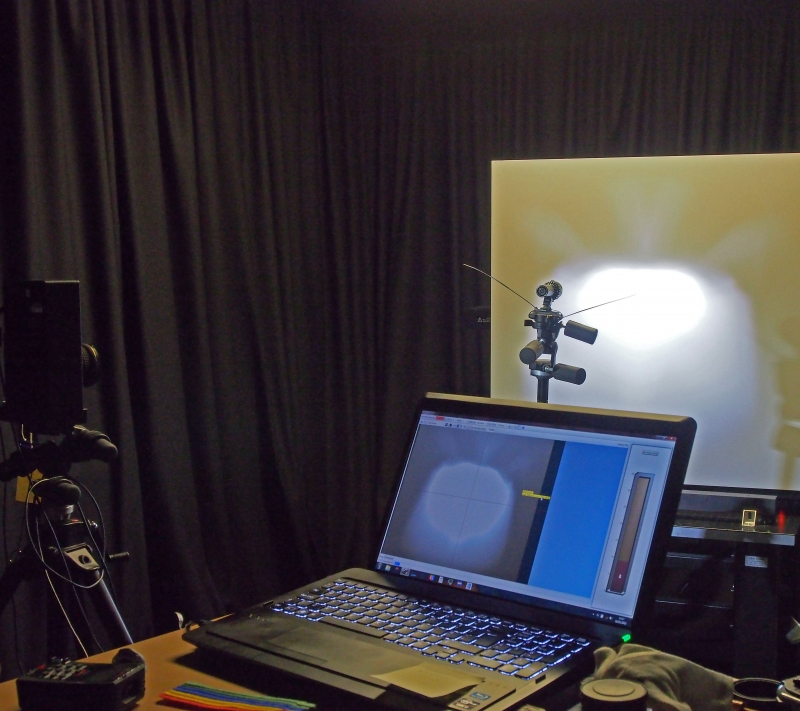
How we tested
The Sunday Times sent their selection box of bright front bike lights to be tested by Dr Gareth John at the Rissington laboratory of Photometric & Optical Testing Services LLP. And I went along to help.
Fortunately perhaps, it takes a lot more light to look a little brighter, and to represent the way in which these differences are actually perceived I’ve charted our measurements on a logarithmic scale. This presentation is not only more realistic but ‘kinder’ to excessively bright lamps than a linear scale. Red spots indicate the intensities of every lamp’s beam centre when it’s set for maximum brightness. Green spots are the intensities 3.5º above there – the values that matter when it comes to dazzle – and green boxes mark the corresponding values on the lamp’s minimum setting.
We would be happy with a lamp that could be dimmed to less than 200cd, or even 652cd, in one simple movement and likewise back to maximum, just like dipping a car headlamp. But with most lamps it takes several button-presses to go from max to min, or back again. So we were not happy with many of these lamps!
We didn’t measure the flash modes, but some of these lamps appear to flash at maximum intensity. This might not be a problem in daylight, but many seem likely to cause discomfort if flashed at night, acute discomfort in the case of photosensitive individuals.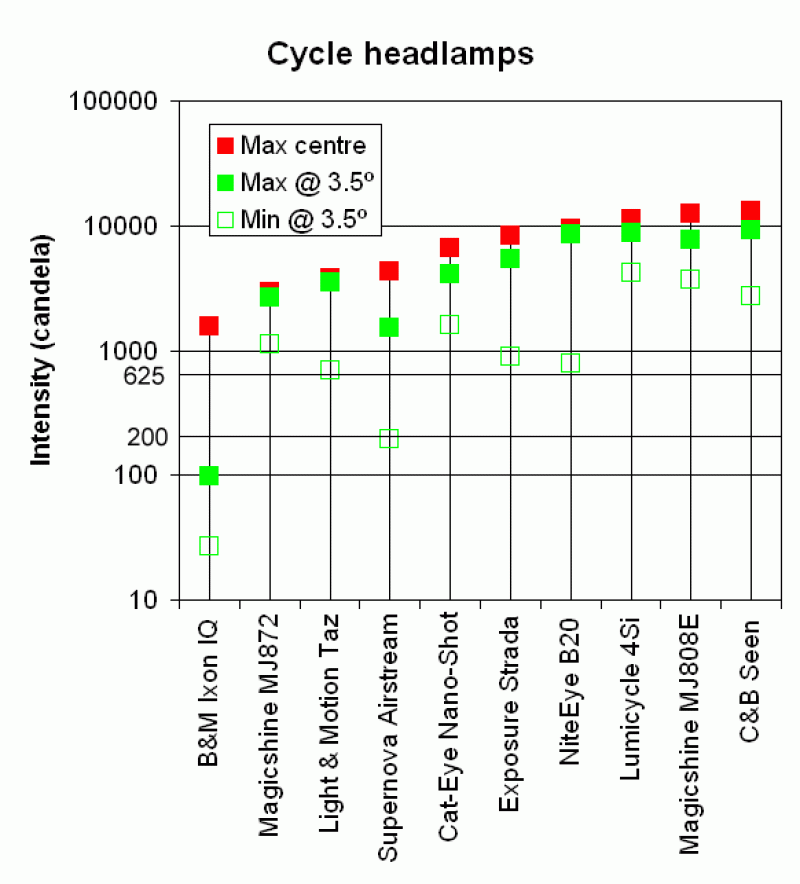
A few words on each lamp tested
Note: this was first reported at Easter 2013. There's been more than a year for manufacturers to consider our findings. Today's products may be more responsibly designed. Maybe.
B&M Ixon IQ - Max 1560cd, Max@3.5° 99cd, Min@3.5° 27cd - Proper vehicular optics (rear-facing LED) and toggles between max and min, but doesn't need to because it's well short of dazzling even on Max. Newer designs from Busch & Müller exceed 5000cd max in beam centre and still keep under 200 at 3.5°.
Magicshine MJ872 - Max 2976cd, Max@3.5° 2649cd, Min@3.5° 1135cd - Quite easy to dim and switch up again, but needs one too many clicks and still waaay too dazzling anyway.
Light & Motion Taz - Max 3806cd, Max@3.5° 3487cd, Min@3.5° 697cd - In 'race' mode (of all modes!), this one can be dimmed to an almost acceptable level - if it were a much larger lamp on a car. Although the designer has made some attempt to shape the beam, it's still far too circular with nothing like a cutoff.
Supernova Airstream - Max 4317cd, Max@3.5° 1537cd, Min@3.5° 197cd - Sophisticated 'Terraflux' lens gives far better beam control than any other forward-facing LED. It's a pity the UK importer didn't send us the street-legal in Germany version, now marketed as Airstream 2. We got the obviously very much brighter International version, which nevertheless can be turned down to a socially acceptable level. But it takes three clicks and that's two too many.
Cat-Eye Nano-Shot - Max 6666cd, Max@3.5° 4045cd, Min@3.5° 1595cd - Toggles between max and low in one click either way, but a lack of beam-shaping makes low nowhere near low enough.
Exposure Strada - Max 8363cd, Max@3.5° 5341cd, Min@3.5° 887cd - We tested this bewilderingly complex lamp in the default '3-mode-high' program, in which all modes are too high. The lowest of '3-mode-med' probably gives the best chance of scraping under 625cd - maybe even 200cd - but still needs two clicks to access from highest mode. The current model is different, with a two-mode mode and a remote switch for easy toggling between highest and lowest. So provided one has the motivation and application to find and set that mode... it is possible to use this very bright lamp responsibly.
NiteEye B20 - Max 9406cd, Max@3.5° 8522cd, Min@3.5° 783cd - Almost acceptable on dim, but takes one too many clicks to dim.
Lumicycle 4Si - Max 11286cd, Max@3.5° 8656cd, Min@3.5° 4218cd - Lots of clicks for nowhere near enough dimming. A real eye-burner. Latest lamps have an eyelid that is claimed to limit upward scatter. It does, but not at usual eye-level, or not until you're almost close enough to touch the lamp - or piloting a low-flying aircraft!
Magicshine MJ808E - Max 12377cd, Max@3.5° 7733cd, Min@3.5° 3699cd - One click for dim, but not at all dim, and 3 clicks back to max - via flashing and off!
C&B Seen - Max 13013cd, Max@3.5° 9121cd, Min@3.5° 2710cd - To call this a torch would be a compliment. It's an LED in a can, an indiscriminate blunderbus of light that simply blasts away at all in its path. It does have a dim setting, if you can call it that.
Conclusions
Manufacturers of bike lamps have proved they can make them bright enough for us to see very well where we’re going. Now they need to give some thought to other road users. The Sunday Times article, perhaps fortunately, didn't make much impression. But I think it's only a matter of time before some MP gets his teeth into this and then we shall be facing a clamp-down, some hasty, ill-considered legislation like the dangerous dogs bill. If that can happen in a nation of dog-lovers, do you think the needs of cyclists will receive more careful consideration?

